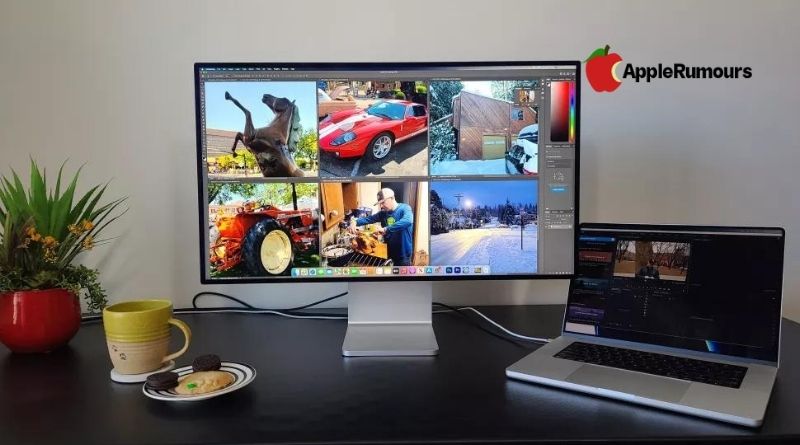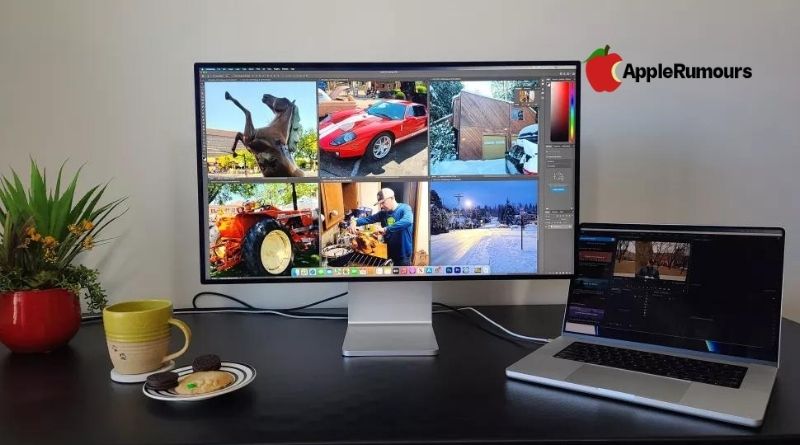This is a round-by-round look at what makes Apple’s new display stand out from its most expensive.
The Apple Studio Display (1,599) is on sale now. It’s undoubtedly the best secondary monitor for MacBook Pro owners looking for a second display. Apple is marketing the Display to creative professionals who do a lot with photo/video editing. The Display comes with a variety of reference modes that allow you to work with different media formats.
Apple’s MacBook Pros and Pro Display XDR6K monitors have similar reference modes. They are all aimed at creative pros (and aspiring professionals) who value color accuracy and fast performance in Adobe Premiere and Photoshop. Here the main question arises how is the $4,999 Pro DisplayXDR and Studio Display different from each other?
The top difference between 27-inch Studio Display and Pro DisplayXDR is that it is smaller and cheaper than the Pro Display XDR. You must understand these differences before you decide which monitor is best for you.
Have a look at the table to see the differences between Studio Display and Pro DisplayXDR.
Apple Studio Display vs Pro Display XDR: Specs
| Studio Display | Pro Display XDR | |
| Starting Price | $1,599 | $4,999 |
| Screen Size | 27 inches | 32 inches |
| Resolution | 5K (5,120 x 2,880 pixels) | 6K (6,016 x 3,384 pixels) |
| Refresh Rate | 60 Hz | 60 Hz |
| HDR | No | Yes |
| Peak brightness | 600 nits | 1000 nits (1600 w/HDR) |
| Inputs | 3x USB-C, 1x Thunderbolt 3 | 3x USB-C, 1x Thunderbolt 3 |
| Webcam | 12MP ultrawide camera | none |
| Speakers | 4 woofers, 2 tweeters | none |
| Dimensions | 24.5 x 18.8 x 6.6 inches (with stand, height tops out at 23 inches w/ optional height-adjustable stand) | 28.3 x 16.2 x 1.1 inches (alone), 28.3 x 21-31.7 x 9.3 inches (with height-adjustable stand) |
Apple Studio Display vs Pro Display XDR: Design

The main features of Studio Display are its 12MP ultrawide camera, a six-speaker sound system, Center Stage support, and an A13 Bionic Chip which is enclosed in a metal and screen-made slab. A black bezel is around the 27-inch 5K screen. If you want a nanotextured Studio Display that reduces glare (Apple claims) then you will have to pay $400 more.
The 12MP camera is located in the middle of the screen at the top (middle of the top bezel). The display also has six speakers (4 force-canceling tweeters, 2 woofers) that can deliver spatial audio. There are also three microphones. These mics are said to be studio-quality and capable of recording pro-grade audio. However, my musical career ended in high school bands so I cannot verify that claim.
Studio Display is 24.5×18.8×6.6 inches in size and 13.9lbs in weight. If you want a height-adjustable stand with the Studio Display then it will cost $400 more and it will add 3 pounds more weight to the weight of the display.
This stand can adjust the height of the Studio Display between 18.8 to 23 inches. We were impressed by the ergonomics of the Display’s height-adjustable stand in our review. However, it is absurd that you would have to spend more than the cost of an iPad to get the privilege.
The Pro Display XDR is similar to the Studio Display except for a few changes like its larger size, more expensive, and it is older than the Studio Display.
With a large slab of metal and screen, the Pro Display XDR is much similar to the Studio Display. However, it is dominated by a 32-inch 6K display. You can get a nano-texture coating for an incredible additional $1,000. The Pro Display XDR is the best choice if you are looking for the most stunning Apple display.
It will cost you an absurd amount. Despite having a whopping price of $5,000 without nanotexture glass or $6,000 with nanotexture glass, the Pro Display XDR does not have the option of an adjustable stand. Apple will charge $999 to purchase the Pro Stand. It’s a well-designed, magnetic stand that connects to the Pro Display XDR easily. Due to its unique design, you can adjust the tilt, height, and rotation of the display.
The Pro Display XDR is a better option than the Studio Display if you prefer to view your displays in landscape mode.
Apple Studio Display vs Pro Display XDR: Screen

The Studio Display’s 27-inch 5K screen (5,120 x 2,880 Pixels) is stunning in person. It has a 218 PPI (pixels/inch) and it can display over 14.7 Million pixels on the screen.
The Display is pre-configured to include a variety of reference modes and it also supports the P3 wide color gamut. The creatives may switch between different reference modes depending on their project. These modes allow creatives to adjust settings such as white point, color space, and gamma to suit different projects. The Studio Display does not support HDR Video reference mode. This is because the Display cannot display HDR content.
The refresh rate of Studio Display is. The Studio display does not have a 120Hz ProMotion adaptive refresh rate found on other Apple products of 2021, it has a refresh rate of 60Hz max.
The 32-inch Pro Display XDR runs a 60Hz with a 6K screen which has a 218 PPI (6,016 x 3,384 Pixels, 20.4 Million pixels). However, that’s a little more tolerable as it was launched in 2019, just before Apple began making ProMotion displays.
The Pro Display XDR’s screen is superior to the Studio Display. This is expected as we can see the price difference between both of these displays, Pro Display XDR costs almost 3x more than the Studio Display.
| Studio Display | Pro DIsplay XDR | |
| Average brightness | 518.4 nits | 466.8 nits |
| Max brightness | 563 nits (center) | 467 nits (center) |
| sRGB color gamut | 114.1% | 106.7% |
| DCI-P3 color gamut | 80.8% | 75.6% |
| Delta-E | 0,21 | 0.2 |
The Pro Display XDR supports HDR content and a wider variety of reference modes, including custom modes, than the Studio Display. It supports the Studio Display’s wide color gamut and Apple claims that it can be brighter than the Studio Display, which can display up to 1,000 nits at peak brightness. This is in addition to the Studio Display’s 600 nits peak lighting. In our tests, the Studio Display achieves brighter levels of 553 nits as compared to the 467 nits of Pro Display XDR.
The Pro Display XDR is capable of viewing HDR content better than the Studio Display. The Pro Display XDR, Apple’s expensive, high-definition LCD screen, has the greatest advantage over the Studio Display. It is larger, more powerful, and can display HDR content in almost every aspect. Considering the price difference, it is not surprising.
Apple Studio Display vs Pro Display XDR: Speakers

The Display’s six-speaker sound system is remarkable for a monitor. It delivers clear, crisp vocals and a surprising amount of bass. Spatial Audio via Dolby atmos is supported so that music and videos can appear as if they are happening right in front of you. It is available on many devices already, and we found it to have a great feature. Although it doesn’t make music surround you, it makes it sound more real.
Because it lacks speakers, the older Pro Display XDR isn’t able to compare. You can listen to music on the XDR while you work, but you will need to use your MacBook’s built-in speakers or purchase a set of computer speakers that are best suited for your needs.
Apple Studio Display vs Pro Display XDR: Ports

The Studio Display comes with 3 USB C ports and 1 Thunderbolt 3 connector. You can charge any device using this Thunderbolt port. This allows you to hook up a MacBook to the display while you work and can also charge your MacBook via USB-C.
The Pro Display XDR has the same port array but it has a removable power cable. Studio Display is permanently grafted onto the monitor.
Apple Studio Display vs Pro Display XDR: Webcam
The 12MP camera on the Studio Display is similar to the camera used in the iPad Air (2022). It captures images and videos of similar quality in our hands-on experience. We were impressed with the quality of the images/video captured by this camera in our review. However, we are continuing to test it because we have noticed differences in image quality between videoconferencing apps.
Apple is releasing a firmware update to address user complaints regarding webcam image quality. Although we tested the beta version of that firmware, we noticed some improvements in Apple Studio Display image quality. However, it is not likely to be obvious to all users.
Studio Display’s webcam also supports Apple’s Center Stage feature. This automatically zooms and crops the shot to keep your frame in place if you move during video calls. This is a great feature and works well. However, it’s less useful on a deskbound screen than on iPads. Tablets are easier to use and set up to capture certain shots.
The Pro Display XDR can’t win this battle, since it doesn’t come with a webcam. Video chatting is only possible with the webcam connected to your Mac.
Apple Studio Display vs Pro Display XDR: Final thoughts
Apple’s Studio Display was initially announced at $1,599 and seemed to be a cheaper version of the Pro Display XDR. We’ve now had the opportunity to evaluate it and it can’t match its older sibling’s professional capabilities.
Pro Display XDR has a larger, brighter, and more optimized display for professional content creators. It features HDR support, a higher pixel count, and a wider range of reference modes. It comes at a premium price: The Pro Display XDR starts at $4,999, and that does not include a stand. Only businesses and well-funded creators are recommended to invest in it.
The Studio Display is an excellent choice for Mac users who need an external display.
The Studio Display has many appealing features such as a 12MP webcam or a high-quality integrated speaker system. But it also lacks many pro-Grade features like 120Hz adaptive refresh rate etc. It is important to know that it shines when connected to an iPad or MacBook running macOS Monterey 12.3 and iPadOS 15.4. You can also use it as a secondary display of 5K with Windows computers.
